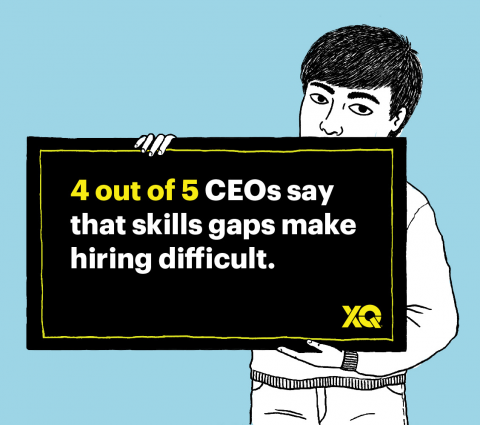

LOCAL INTEREST BOOK 100 THINGS TO DO IN SALT LAKE CITY BEFORE YOU DIE, 2ND EDITION OFFERS A VARIETY OF WAYS TO EXPLORE THE CITY THIS AUTUMN
SALT LAKE CITY, UT—The cool fall weather means more activities and festivals in the Salt Lake City area. Jeremy Pugh, author of 100 Things to Do in Salt Lake City Before You Die, 2nd Edition, has put together the definitive Salt Lake City bucket list, and it’s full of fun things to do in the fall months. Below are some suggested autumn activities straight from the book itself:
• Yodel along at Snowbird’s Oktoberfest in a high-mountain setting, where the festival features lederhosen, beer, and oom-pah-pah bands.
• Eat a Brigham city peach on the famed “Fruit Way,” where you’ll discover fruit and vegetable festivals throughout the fall such as Peach Days, Melon Days, and Apple Fest.
• Scale the heights of great Mount Olympus, where hikers take the daunting task to see a top-of-the-world panorama and call themselves a hiker in Salt Lake.
Jeremy Pugh is a writer living in Salt Lake City who, in one way or another, has been writing about culture, history, and the outdoors in Utah for more than two decades. Currently the digital director at Salt Lake magazine, Pugh is also a freelances and consultant writing for SKI, VIA, and Park City magazines. A lifelong Utahn, Jeremy travels widely but always returns home to the mountains where he bikes, hikes, and skis as much as possible. Share your SLC experiences on Twitter and Instagram @verydynamite and read more of his writing at www.VeryDynamite.com.
Jeremy would be happy to discuss the fall activities mentioned in the book. Please contact Don Korte at dkorte@reedypress.com to arrange an appearance or interview.
Author Contact Information
(801) 673-5190, saltlakeeditor@gmail.com
About the Book
100 Things to Do in Salt Lake City Before You Die, 2nd Edition-part of the 100 Things to Do Before You Die series
9781681061948
Softcover 8.5 x 5.5 inches
160 pages
$16.00
==========================
3 Ways To Guard Against Letting
Someone’s Betrayal Define Your Life
Betrayal comes in many variations: a friend gossiping about a secret you shared in confidence; a relative taking advantage of your hospitality to steal from you; a spouse engaging in an affair.
But regardless of what form betrayal takes, the results share something in common.
“Betrayal destroys trust, and since trust is the foundation of all relationships, it’s no wonder that betrayal does such damage,” says Elaine Eisenman, PhD, co-author with Susan Stautberg of Betrayed: A Survivor’s Guide to Lying, Cheating, & Double-Dealing (www.bouncefrombetrayal.com).
These two successful business women say they themselves have experienced betrayal professionally and personally. But the good news, Stautberg says, is that despite the initial trauma, pain, and humiliation, most people survive and recover from betrayal and become stronger and wiser as a result.
“Recovery is not a single point in time; it is an ongoing process,” she says. “One day, you’ll discover there are simply more ups than downs. Hang on to that because it will steer you through darker moments.”
In the meantime, Stautberg and Eisenman offer a few suggestions on how to guard against letting someone’s betrayal define your life:
Listen to your gut. Your gut instinct is an incredible natural warning system, Eisenman says. “It can help you sense a betrayal before it becomes a reality,” she says. Instead of closing your eyes or creating excuses for someone else’s odd behavior, listen carefully to your uneasy feelings. Those nagging doubts can help you avoid a betrayal, or at the very least, lessen the impact of one.”
Hold onto your power. Even while you are navigating through a fog of deception and hurt, you do hold some cards. “You just need to step back and see them,” Stautberg says. For example, you alone decide whether or not to forgive your betrayer. “By recognizing and addressing the new challenges, making decisions about your next steps, and retaining your sense of self, you reclaim your power,” she says. “Those who recover best never relinquish power to the betrayer.”
Have the courage to move forward. It’s important to face the fact you aren’t in control of certain events and you will never create a perfect do-over that will fix everything, Einsenman says. “To begin the act of recovery look the nasty circumstances in the eye and see them for what they are,” she says. “The fallout from betrayal says more about the betrayer’s values than it does about you, so toss the bad stuff in the garbage and put a permanent lid on it.”
“Hurt, setbacks, and diabolical events touch all of our lives; there is no escape,” Stautberg says. “But inside all of us are the keys to unlock our courage and strength, and that’s how we move on and build a better future.”
About Elaine Eisenman, PhD
Elaine Eisenman, PhD, co-author with Susan Stautberg of Betrayed: A Survivor’s Guide to Lying, Cheating, & Double Dealing (www.bouncefrombetrayal.com), currently serves as an independent Board Director for DBI, Inc. (NYSE), as well as for AtmosXR and Miravan, both privately held companies. She is the Managing Director of Saeje Advisors, LLC, an advisory firm for high growth ventures. Former Dean of Executive and Enterprise Education at Babson College, she works closely with CEOs and their executive teams to create cultures that accelerate growth. She is a frequent speaker on the topic of turning risk into opportunity.
About Susan Stautberg
Susan Stautberg is Governance Advisor to the portfolio companies of Atlantic Street Capital, a private equity firm. She is also President and CEO of PartnerCom Corporation and Chair Emeritus of the WomenCorporateDirectors Education and Development Foundation (WCD). Susan addresses groups around the world, including leading business schools and CEO conferences. She has written or been featured in numerous articles including The New York Times, The Wall Street Journal, and The Financial Times and her on-air experience includes Oprah, The Today Show, CBS Evening News, CNN and many others.
===================
Colleagues,
We, at the Utah Women & Leadership Project (www.utwomen.org), have a number of announcements for September:
First, we are pleased to announce the release of a new research snapshot titled “Voting and Civic Engagement Among Utah Women: A 2019 Update.” Robbyn Scribner and I found some positive changes in women’s voting rates in Utah!
Second, our next Utah Women’s Leadership Speaker & Dialogue Series free event is titled, “Make a Stronger Impact in Utah & Beyond: Unleash Your Power as Women to Do Good!” It will be held on Wednesday, September 25 (6:30-8:30pm) at UVU (live streaming available too). Carine Clark, four-time president and CEO of high-growth tech companies, will give a short keynote, and then attendees can choose one of three workshops:
Check out our flyer for details on presenters and more information about the sessions. You can RSVP online now! Thanks to our three premier sponsors for our community events this year: Squire, L3Harris, and MX.
Third, we highlight three resources that may be of interest to you:
Fourth, on October 9 (7:30-10:30am), we’ll be hosting an event titled “Designing Corporate Women’s Networks, Initiatives, and Leadership Programs: A Research-Based Workshop” (see link for cost/details). This gathering is designed specifically for company representatives who are interested in creating, designing, developing, or restructuring women’s networks, groups, programs, and/or other initiatives in their organizations. Thanks to SolutionReach and eBay for their sponsorship.
Fifth, here are some important events that our partners are hosting:
Fifth, the community is invited to a Women’s Leadership Forum (Panel and discussion) focused on “Girls, Sports, and Leadership” (October 1, 4:00-5:30pm). Panelists will be UVU’s Megan Kennedy (Associate Athletic Director), Cathy Nixon (Senior Associate Athletic Director), Sue Nyhus (Head Coach-Women’s Golf), Kylin Muñoz (Assistant Coach-Women’s Volleyball), and Hannah Bruce (Student Athlete-Women’s Soccer). See details and RSVP here.
Finally, check out the following editorials and articles:
Don’t forget about our community calendar that lists all of the women’s events and gatherings in the state. Enjoy September!
Susan
Prof./Dr. Susan R. Madsen
Orin R. Woodbury Professor of Leadership & Ethics
Founding Director, Utah Women & Leadership Project
Woodbury School of Business, Utah Valley University
Orem, Utah, USA | (801) 863-6176
madsensu@uvu.edu | www.utwomen.org
LinkedIn | Twitter | Facebook | Instagram
================================
In honor of Labor Day earlier this week, we are diving into our blog archives to revisit a post on XQ Institute's report High School & the Future of Work. This continues to be a topic of conversation across America, and many states are beginning to implement some of the following policy solutions to better prepare students for successful careers.
State policy can be a powerful driver and support for local innovation in education. This is one of the core principles of ExcelinEd’s work and partnership with states over the last decade. It’s also a major theme of XQ Institute’s new report High School & the Future of Work, which calls on policymakers to help communities transform high schools and better prepare students for success in a shifting economy.
Their report calls out a number of startling statistics, some we have called attention to in the past and others that are new.
While the workplace continues to evolve at a rapid pace, high school has remained largely unchanged for decades. Worse, it’s simply not working for many students. While 84 percent of high school students want to attend college, less than half graduate adequately prepared for postsecondary success. Worse still, high schoolers seem to know it’s not working. Just 32 percent of 11th graders surveyed said they learned something of interest in the past week, and over half of high school seniors feel their math work is “too easy.”
It doesn’t have to be this way. As evidence, XQ Institute’s report highlights schools like Crosstown High in Tennessee, Grand Rapids Museum School in Michigan and Purdue Polytechnic in Indiana that have reimagined the high school experience. These schools offer rigorous, real-world instruction in high-demand fields like computer science, technology and design, and advanced manufacturing. They are doing more than just being innovative; they are solving real problems in their communities and empowering students to invest in ideas and projects larger than themselves.
As noted, scaling such local innovation requires support and action from state policymakers. Among the report’s recommendations are several we care deeply about, including:
There’s more in the report to chew on – it’s well worth a read. But for policymakers, these recommendations represent important steps to consider to help ensure their states’ future includes a skilled workforce and thriving communities.
The future of this work is now.